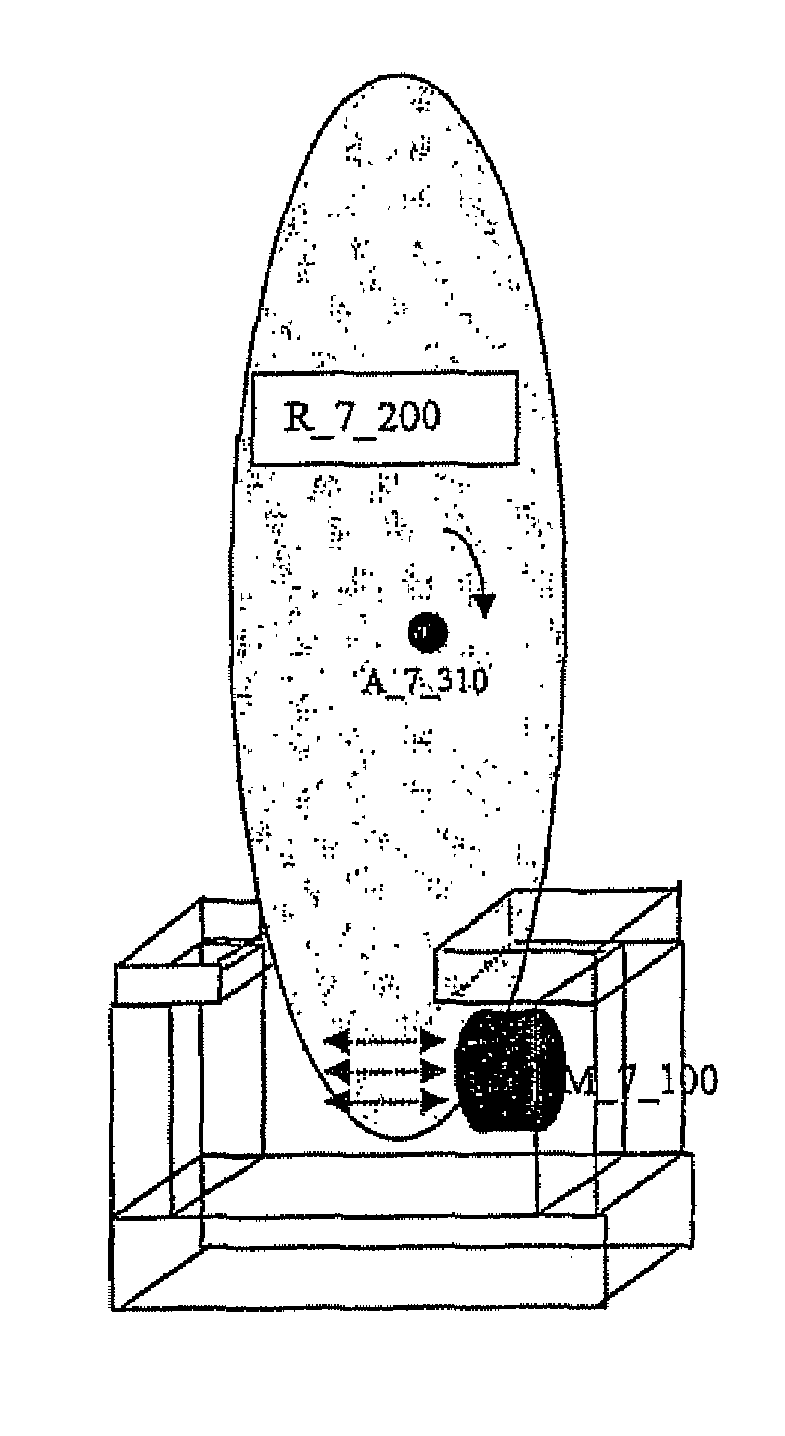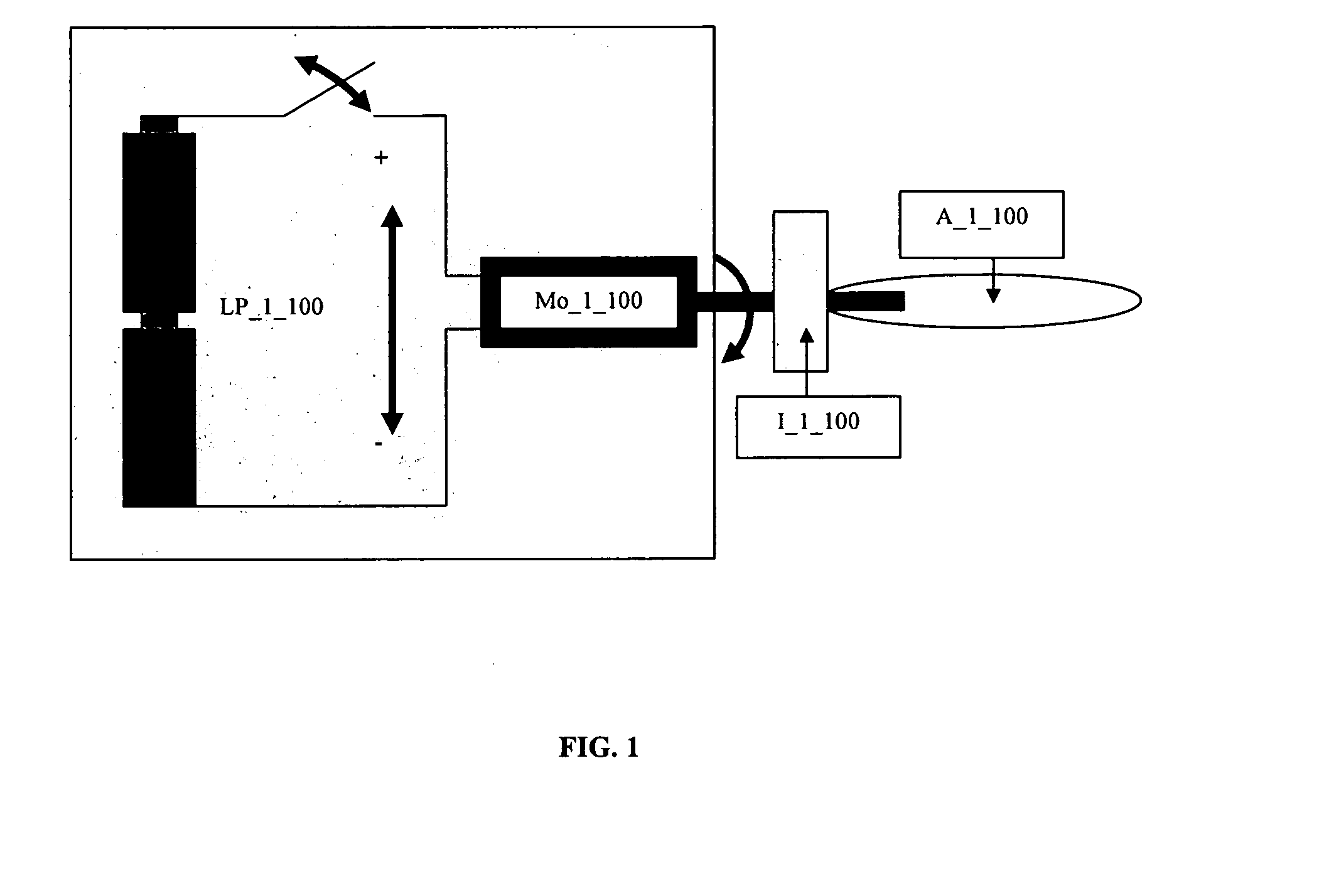Motion control using electromagnetic forces
a technology of electromagnetic force and motion control, applied in the direction of electromagnets, dynamo-electric machines, synchronous motor starters, etc., can solve the problems of ineffective simple resistive motor speed control techniques, friction brakes are prone to stick-slip, and the voltage is too low for cost-effective electronic control of motion, etc., to achieve the effect of reducing the variation of speed
- Summary
- Abstract
- Description
- Claims
- Application Information
AI Technical Summary
Benefits of technology
Problems solved by technology
Method used
Image
Examples
Embodiment Construction
[0115]The present invention extends the domain of electric motor speed control (and general motion control using possibly other prime movers or unpowered motion), traditionally characterized by electronic techniques, to small apparatus (SAs). Primarily but not exclusively, physical motion of appropriately shaped, magnetic flux-producing devices, and appropriately shaped, interacting devices (primarily but not exclusively magnets and / or conductive and / or ferromagnetic portions of the apparatus) is used for the control. In particular, we describe modifications of electric motors, induction clutches and brakes, and electromagnetic actuators, yielding new devices, which can be used for controlling motion of a large variety of apparatus.
[0116]Our techniques offer the ability to perform detailed control of motion timing in mechanisms, and arbitrary timing functions can be generated. We also describe new application of our devices in existing apparatus, as well as new kinds of apparatus, y...
PUM
 Login to View More
Login to View More Abstract
Description
Claims
Application Information
 Login to View More
Login to View More - R&D
- Intellectual Property
- Life Sciences
- Materials
- Tech Scout
- Unparalleled Data Quality
- Higher Quality Content
- 60% Fewer Hallucinations
Browse by: Latest US Patents, China's latest patents, Technical Efficacy Thesaurus, Application Domain, Technology Topic, Popular Technical Reports.
© 2025 PatSnap. All rights reserved.Legal|Privacy policy|Modern Slavery Act Transparency Statement|Sitemap|About US| Contact US: help@patsnap.com



